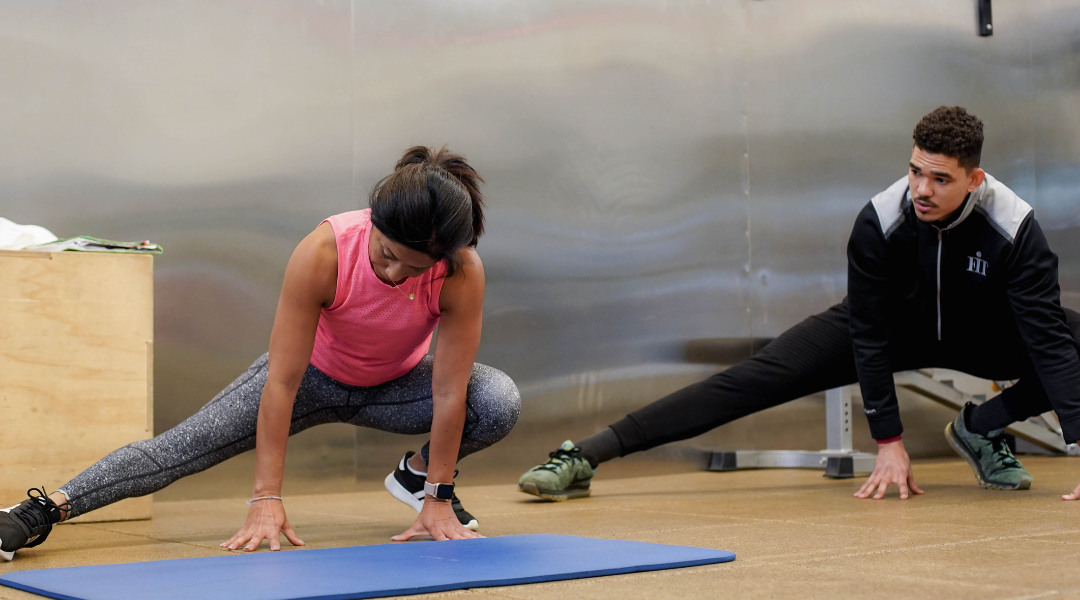In 2010, Kelly Starrett and his wife Juliett Starrett created a company called Mobility WOD (workout of the day) and began posting daily mobility videos on YouTube. These short “workouts” focused on the basic premise that using the body as nature intended was key to improving athletic performance and quality of life.
With a better understanding of how the body is designed to move and attention to basic mobility, everyone with a YouTube account could experience less pain and more freedom of movement. After the immense popularity of these videos, “mobility” became a buzzword among sports and fitness experts.
Today, mobility is considered fundamental to quality of life and closely related to the other FiT tenets – especially sleep hygiene, stress management and eating strategy. In this blog we will explore why improving your mobility isn’t as easy as stretching more and provide some simple strategies to keep you feeling and performing at your very best.
What is Mobility?
Try this test. Take your shoes off and cross one foot in front of the other. Without holding on to anything, bend your knees and lower yourself down to a cross legged position. Now reverse the move by leaning forward with arms stretched out in front to balance yourself and stand up without touching your knees or hands to the floor. How’d you do? This is called the sit and rise test and was used in a 2014 study of 2,002 men and women, ages fifty-one to eighty. Over six years the researchers concluded that an inability to get up and down off the floor without assistance is associated with a greater risk of death.
For most sedentary individuals, mobility will start to become a problem as they age. It’s truly a use it or lose it part of being human. Mobility limitations can present themselves as an achy shoulder when reaching for a glass, or worst case – struggling to walk. Having good mobility means being able to express the movement capabilities of the body with ease and without pain.
Starett’s definition sums it up well. “Mobility is kind of a wonky term that refers to something quite beautiful: the harmonious convergence of all the elements that allow you to move freely and effortlessly through space and life. Everything is in sync – your joints, muscles, tendons, ligaments, fascia, nerves, brain, and the vasculature that runs through the body.”
To Stretch or to Mobilize?
Many people were brought to believe that they can improve the length of their muscles by stretching more. Static stretching often does result in improvements to passive joint range of motion (ROM). Passive meaning that the ROM is achieved exclusively by an outside force (such as a therapist or by moving a limb externally). Interestingly, this passive ROM is not caused by increased length of the muscle (or decreased tension), rather an increased tolerance to stretching by the person (1). What we’re really after in regards to mobility is active ROM – where our nervous system, brain and muscular strength are coordinating together to produce movement.
In a practical sense, most people don’t hold stretches for long enough, have shallow breathing, or their mind is completely elsewhere. It’s like attempting to get better at cycling by kicking back on a recumbent bike watching Netflix. Would you pay attention to your power output, breathing or technique? Probably not.
Our bodies are so much more complex than a bag of parts needing adjustments. Every system works together. Our time is better spent by looping in the brain and nervous system to truly improve how the system functions as a whole. If it feels good to stretch, by all means do it. However mobilizations are key to producing lasting changes to active range of motion.
When you do a mobilization – a move that brings your joints to natural end ranges everyone is built to assume, you invite your brain and body to a session of exposure therapy. Your brain tells your body “hey, we’re spending time here, we’re still breathing..relax.” When the brain feels that it is safe for a joint to go through a particular range of motion, it will take the brakes off the muscles and allow better ease of movement. This goes against the traditional theory that tight muscles are the only cause of poor mobility. Biomechanics and our overall posture also have much more influence over mobility than previously thought.
Can’t have one without the other
Imagine a ballerina that can’t balance on the toes or an archer that can’t hold their shoulder back in a retracted position. These would be two examples of instability and is caused by weak tissues (muscles, ligaments, bones) surrounding the joint.
Stability is a vital component of a well functioning body and is really another word for strength. Your body can’t maintain control of joint movement or positioning without sufficient strength of the surrounding tissues.
The aim for everyone should be a balance of mobility and stability throughout the body. People who are too mobile, or hypermobile, can be prone to dislocations and joint pain because they are not able to sufficiently control their joints . One of the best treatments for this is strength training.
Breathe better to Move better
Since the release of the popular book Breath: The New Science of a Lost Art by James Nestor in 2020, breathing has become a subject taken much more seriously in the mainstream.
Besides the role it plays in calming the mind and lowering cortisol, breathing has a direct correlation with body mechanics. Our entire axial skeleton (skull, spine, laryngeal skeleton and ribcage) moves and flows with the breath. At least it should.
Mouth breathing and shallow breathing can lead us to develop incomplete respiratory cycles, typically skewed towards exhalation or inhalation. This can directly influence our posture or how our body is organized. For example, as we inhale our ribcage rises, lumbar lordosis reduces and the sacrum tilts back into counter nutation. When we exhale, the opposite motions should happen.
When our skeleton can no longer move with the breath or through full respiratory cycles, mobility and even energy levels can be limited, while pain can increase. Ever find yourself rubbing your neck while at the computer? Check in with your breath and try to notice if your breathing is shallow.
When our bodies are in a posture unsuitable for good breathing mechanics, we tend to breathe into our neck and chest muscles, which can potentially be a component of neck and other types of pain.
The physical therapist Gray Cook said it best, “If you can’t breathe in a position, you don’t own that position.” This goes for all positions, whether that’s sitting, grabbing a cup from the cupboard, or bending over to pick something up.
It’s worth saying again, the influence our breathing has on mobility and overall health should not be underestimated.
It’s all connected – FiT Tenets
Proper functioning of the body, including our mobility and stability, cannot be divorced from our sleep hygiene, stress management and eating strategy. In many cases it is worth prioritizing these areas first. Stan Efferding always says that sacrificing sleep to exercise is like “stepping over one hundred dollar bills to pick up dollars.” We think the same can be said for a mobility practice. Focusing on these areas before mobility may be something to consider depending on your lifestyle and current circumstances.
Sleep hygiene
Short sleep duration has been linked to bodily pain, mobility limitations and disability (2). Adequate quantity and quality of sleep is the foundation that everything else revolves around, including cardiovascular health, cognitive function and how we experience pain. In a sleep deprived state, we’re more likely to make poor food choices or sit slumped at our desk. Fortunately the body is incredibly tolerant and forgiving- think having a newborn or cramming all night for a test or work project. However, our habits and sleep quality will eventually catch up to us.
Eating strategy
Food is the building block of all the tissues in the body including muscles, tendons, ligaments and other tissues. Your daily nutrient intake also influences the levels of inflammation in your body, which can determine how well you heal from injuries or surgery. We understand that the world of dieting and nutrition can be confusing and overwhelming, but by at least focusing on adequate protein and micronutrients you can ensure you’re giving your body the building blocks it needs to support healthy tissues.
Mobility Training Methods
2023 was the year that mobility programs became very popular on social media, with influencers performing impressive feats of mobility to gain subscribers to their mobility programs.
These programs can be great for many different people, but the important thing to ask yourself is – what are my goals? What areas could use some more work – strength, conditioning, mobility? Not everyone needs extraordinary mobility to live a happy and healthy life.
For the average person not participating in a sport, fitness qualities such as strength, conditioning, mobility, are best trained in a balanced manner, without sacrificing one for the other. Since the most common problem (or excuse) with adherence to exercise is a lack of time, use caution when deciding to purchase a program that may have you investing more time than you thought. Do you really need to be able to do the splits? Many things are nice to have, not a must have.
Today, more research regarding the long-term implications of mobility interventions is urgently needed. While there are many well established practices known to work well such as yoga, tai chi, QiGong and pilates, many people are seeking simple ways to improve their mobility with minimal time commitment. It’s important to reiterate the need for a balanced program here. These practices are a great supplement, not a replacement for strength and cardiovascular training.
Improve mobility while watching TV
One of the most simple ways to improve mobility naturally is to ditch the chair and spend more time on the floor. However, for most people sitting cross legged on the floor can become intensely uncomfortable after a few minutes.
The modern lifestyle of spending lots of time sitting and working on computers or watching television has, in effect, made our most precious mobility tool a roadblock. Taking frequent breaks from sitting to walk around and move can be very beneficial for our bodies and brains. Set a timer on your watch or phone at regular intervals (at least every 30 minutes) to keep you accountable.
It’s important not to forget how adaptable the body is. Through gradual exposure to more floor time, our bodies can slowly begin to reset. It may not sound relaxing now, but ditching the couch while you watch TV in favor of sitting and rolling around on the floor can be a powerful way to improve your mobility. The trick is to change positions often, as soon as you become a bit uncomfortable.
There are many ways to sit, but some of the best options are cross-legged, long sitting (sitting upright with legs out straight in front), and 90/90 sitting (like a hurdlers stretch with
the front leg at an L and the back leg at an L). If floor sitting is too painful for you in general, don’t get discouraged. It is important to slowly build exposure over time. Start with five to ten minutes per day and increase at a pace that feels right for your body.
Strong and Mobile
Aiming to perform strength training exercises with full range of motion and excellent form can be a sneaky way to concurrently improve mobility and strength.
The hard part of this could mean reducing the weight to start. Just set your ego aside and know that the payoff could be reduced pain and better functionality of your joints over the long term.
If you are very stiff or feel locked up before your workouts, spend 3-5 minutes doing some mobility exercises before and after your strength training or cardio sessions.
Conclusion
Maintaining adequate mobility for daily activities doesn’t have to be a huge time commitment, nor should it be, but we all have to abide by the rule that if we don’t use it – we will lose it. Prioritizing mobility and flexibility as you age will allow you to keep doing the activities that you love while feeling good.
Remember to keep your own personal mobility goals in mind when determining what exercises or activities to do. Or better yet, discuss with a trainer or health professional what the best option is. Effective mobilizations and exercises that improve active joint range of motion, soft tissue quality and promote proper breathing will provide the longest lasting impact to your mobility.
Build a solid foundation of quality nutrition, sleep hygiene and stress management before making mobility a top priority. Deficiencies in these areas can make improving mobility very difficult.
Keep in mind that one of the most important aspects of good mobility has carry-over to reducing stress and improving quality of life dramatically – the breath. Daily breathing exercises can be a low hanging fruit to improve mobility, stress and even sleep. Try a well established technique such as box breathing or use a meditation app to help calm your nerves before or during your mobility session.
It’s never too late to make important changes to your health and mobility. Start today and experience the benefits of a well-integrated body with more freedom of movement, less pain and a calm nervous system.
Sign up for FiT’s Health Optimization and Wellness Blog
![]() 600 Rancho Shopping Center, Los Altos CA 94024. | 650-947-9831
600 Rancho Shopping Center, Los Altos CA 94024. | 650-947-9831
Get Directions | Email Us | Jobs | Follow us:
Sign up for FiT’s Health Optimization and Wellness Blog
![]() 600 Rancho Shopping Center, Los Altos CA 94024. | 650-947-9831
600 Rancho Shopping Center, Los Altos CA 94024. | 650-947-9831
Get Directions | Email Us | Jobs | Follow us:
Kristin Pampeyan
Trainer
Spirit Animal: Bumblebee
What I love about FiT: That everyone is invested in the community whether it’s by hosting additional activities or sharing knowledge. It’s all to make each other better and help out the clients.
Favorite sports: Swimming and Softball
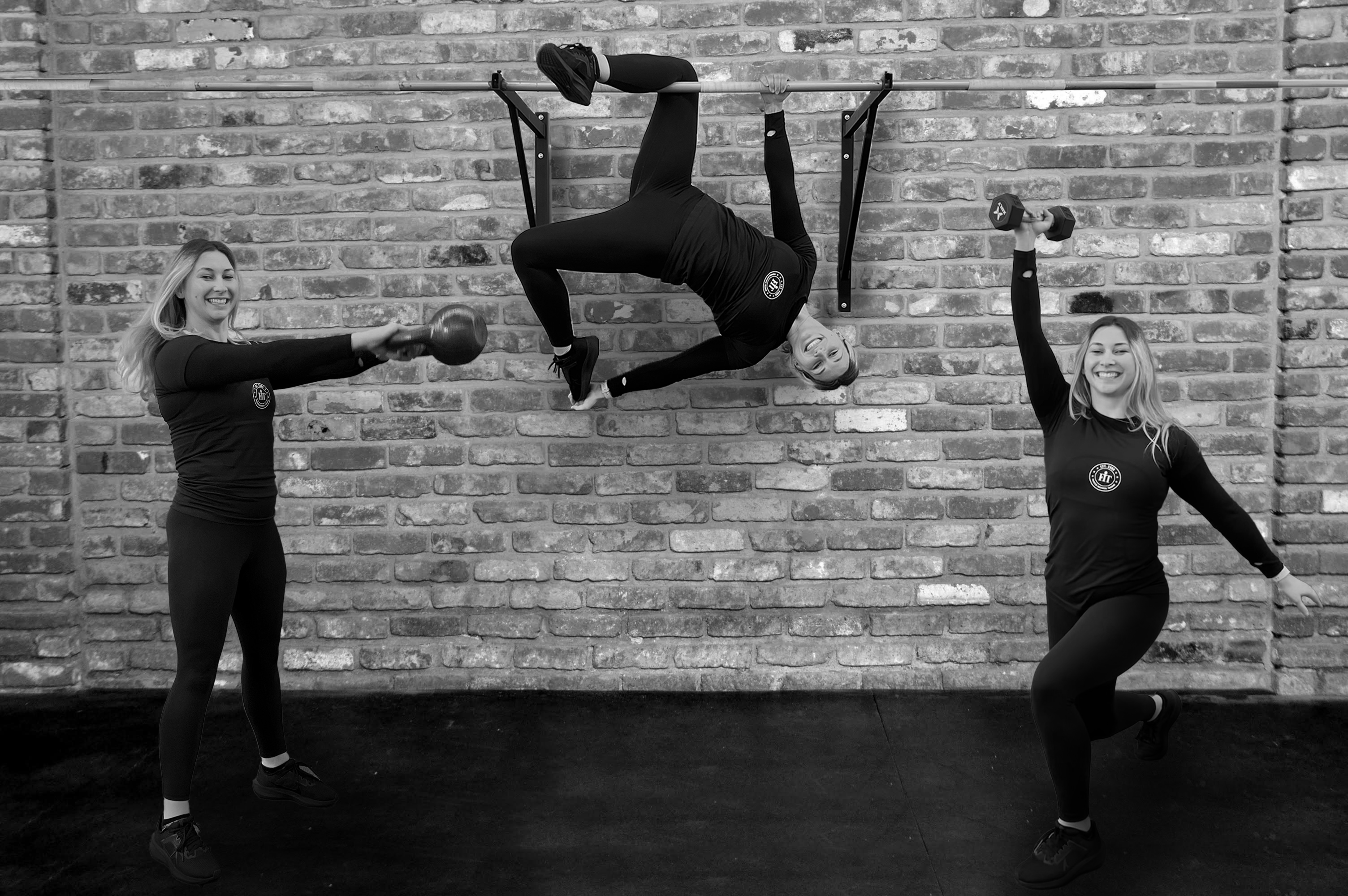
Dae-Von Bishop
All the way from East Palo Alto, Dae-Von was an avid basketball player and fan since the age of 10. From Eastside College Prep to Sonoma State to Foothill where he received his AA in psychology. Dae-Von developed a passion for training and helping others stay active and healthy after a bad ankle sprain in high school that occurred during the basketball season. Dae-Von received training the following summer at The Riekes Center, leading him to have a healthy senior year season as well as making 2nd team all league.This is what inspired him to become a trainer and help other athletes stay in great shape. At 20 years old, Dae-Von’s personal training journey began at The Riekes Center, and he hasn’t looked back since.
Dae-Von holds certifications in personal training through NASM, archery, as well as speed and agility and weightlifting both through NSPA. He even will do some basketball skill development on the side for young hoopers. His goal is to help people stay as fit and active as possible with little to no complications. I love training groups of athletes in either middle or high school. Those age groups tend to be the best time for athletes to get faster and stronger, as well as they begin to understand movement patterns which allow them to perform at an elite level. There is also a natural competitive aspect of training in groups that pushes kids to go harder during drills.
In his free time, you can find Dae-Von shooting hoops, working out, playing video games, spending time with friends, trying new foods(as long as there is no avocado), or hanging out with his frenchie, Trouble.
- Personal Trainer (NASM)
- Certified Speed and Agility Coach (National Sports Performance Association)
- Certified Weightlifting Coach (National Sports Performance Association)
- Archery Lvl. 2 (USA Archery)
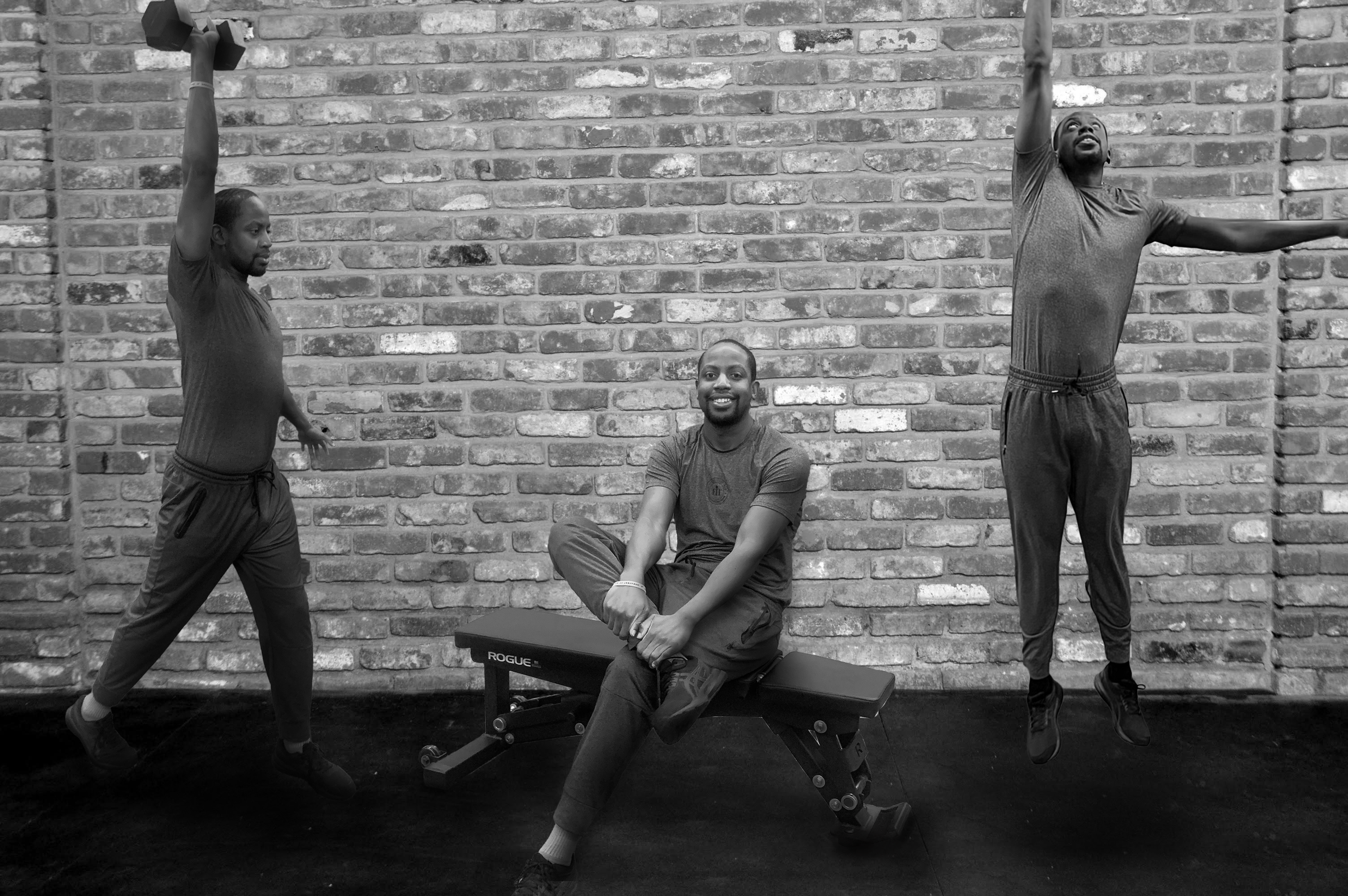
Megan Justice
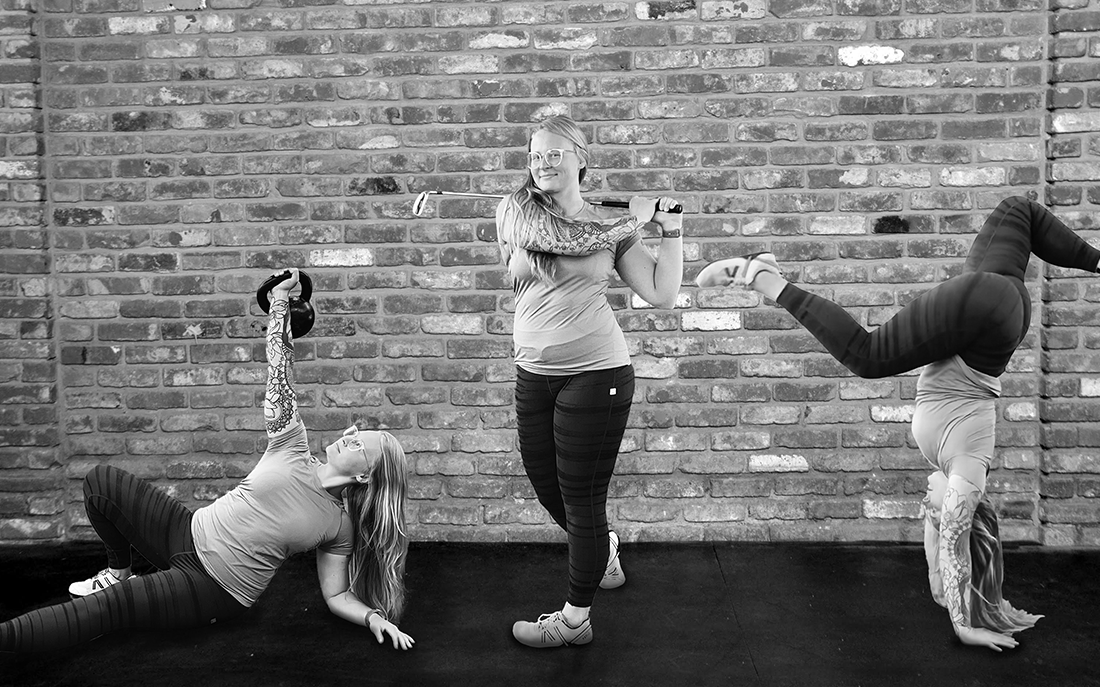
Jon Angeles
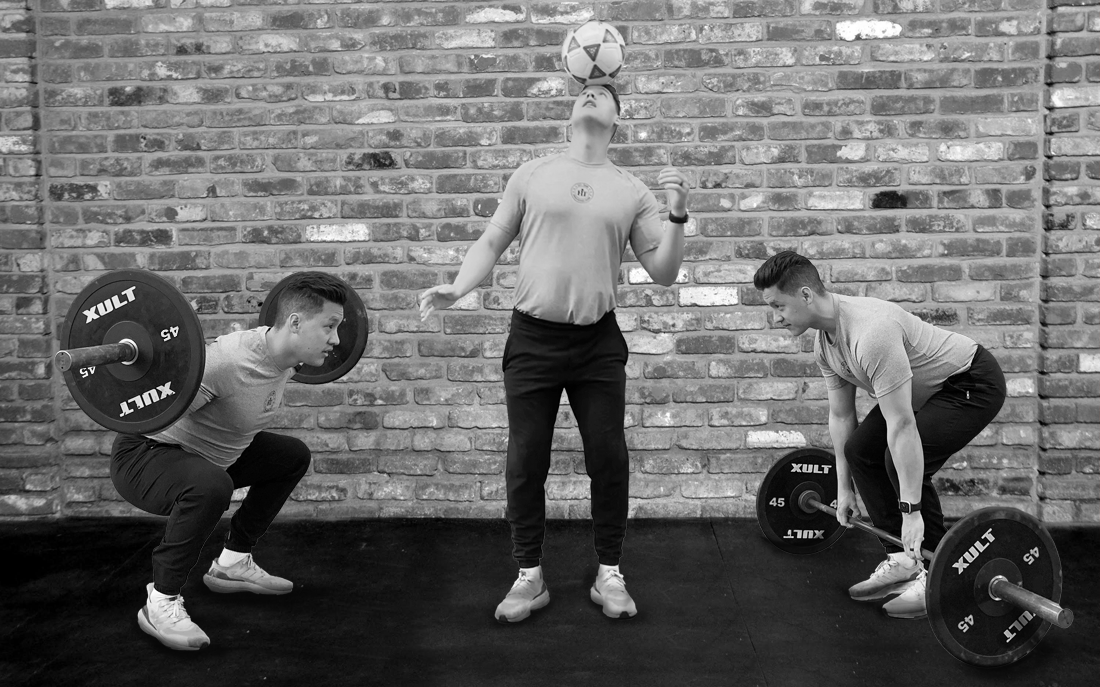
James Frederick
Trainer
Spirit Animal: Orca
Contact
-
Dynamic Variable Resistance Training (DVRT) Level 1 Certification
-
Certificate in Nutrition (FAB Academy)
-
Certificate in Applied Stretching Theory and Practice (FTP)
-
NASM-CPT
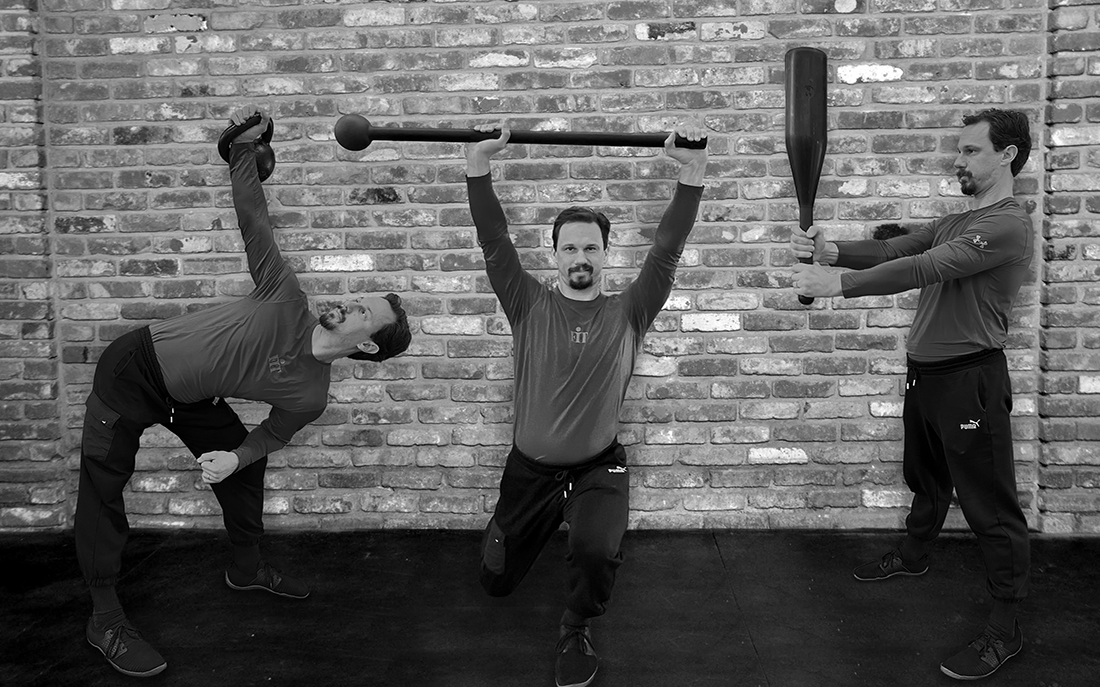
Jake Verhulp
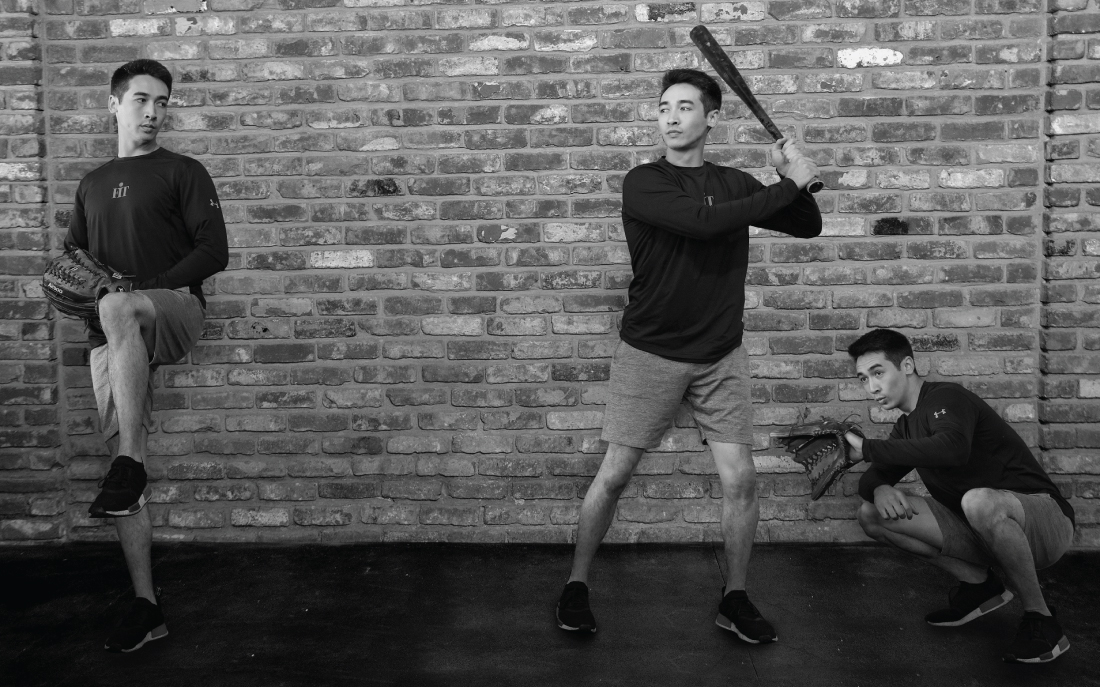
Hannah Golden
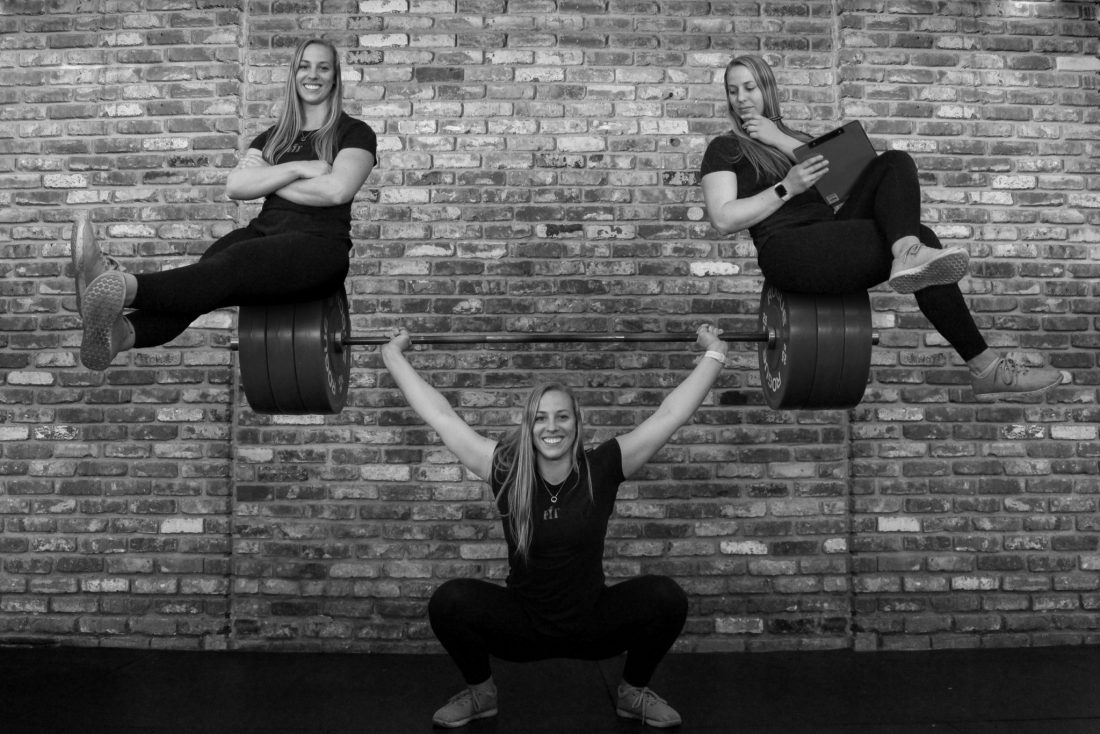
Serena Earwicker
Operations Manager
Spirit Animal: Owl
Contact
Serena manages the day-to-day operations at FIT. If you need help with something apart from training, she is the one to get it done.
Outside of FIT you will find Serena hiking, biking and playing at the beach with her family.
What I love about FiT: FiT is welcoming and supportive to all. It feels like a hug, a sweaty one. Haha
Favorite sports: Anything I get to see live! Love the energy.
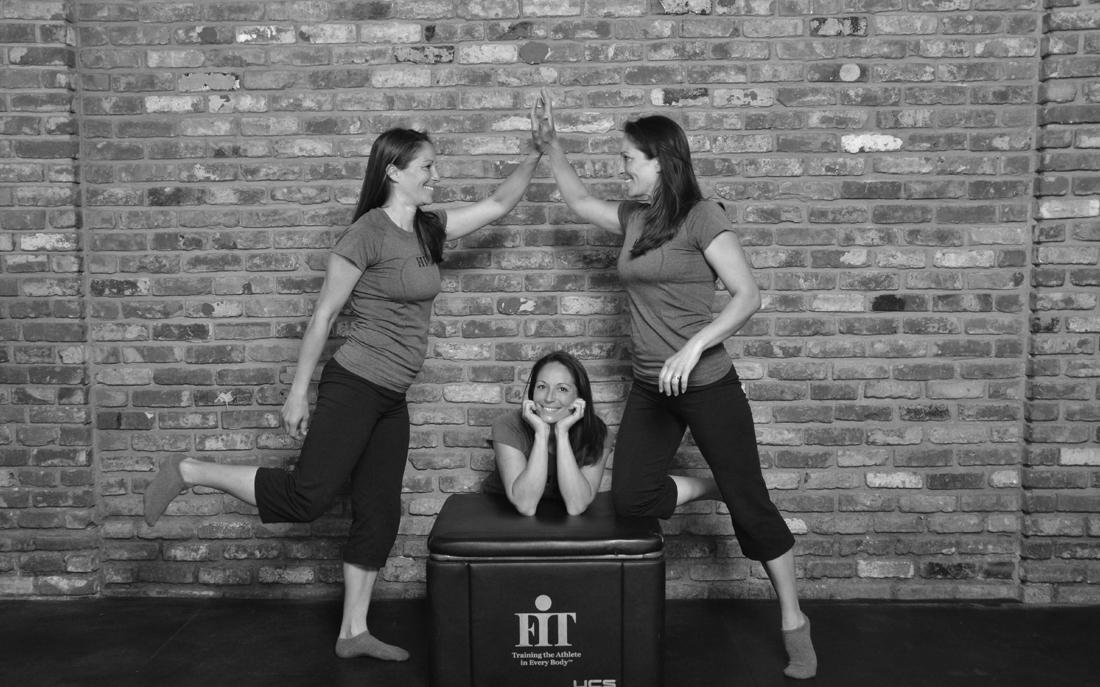
Tracey Downing
Owner
Spirit Animal: Owl
Contact
Tracey Downing has dedicated her life’s journey to empowering individuals to discover newfound confidence in their physical abilities and take command of their long-term well-being. Together with her husband, Thom, she established FiT, a health promotion company, in 2000, impacting numerous lives by guiding them towards positive lifestyle shifts and instilling the importance of prioritizing their health.
Her academic journey at the University of Michigan, where she graduated with a degree in Kinesiology, was complemented by a vibrant period of exploration. Tracey’s adventures took her across the globe to live in places like New Zealand, Ireland, and Scotland. These enriching experiences allowed her to indulge her passion for travel while simultaneously nurturing her professional growth, with roles in clinical and professional sports settings.
Beyond her entrepreneurial pursuits, Tracey treasures her role as a mother to two wonderful children. Outside of her business endeavors, she has completed an Ironman Triathlete, a testament to her unwavering determination, had the incredible honor of being an Olympic Torch Bearer for the Salt Lake City Olympics, and is a 20 year survivor of breast cancer.
In Tracey’s world, fostering physical wellness is not just a profession; it’s a lifelong vocation driven by a genuine desire to inspire and uplift others on their unique journeys toward lasting health and vitality.
What I love about FiT: Seeing people change: doing more than they thought they could, learning more than they thought they would, and showing up to make themselves better.
Favorite sports: Playing tennis and watching anything my kids are playing
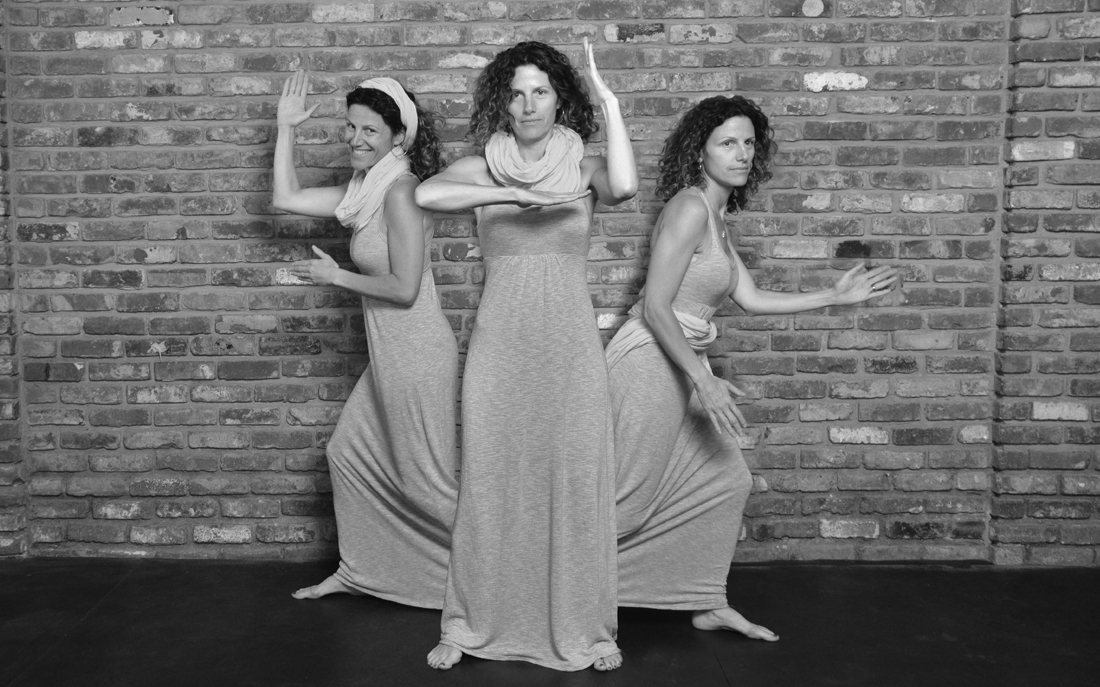
Brett Lando
Physical Therapist
Spirit Animal: Cheetah
Contact
Brett grew up in San Francisco and attended St. Ignatius College Preparatory where he ran cross-country and track and field. After graduating from high school, he attended the University of California, Irvine where he earned his Bachelor’s degree in Biology. While at UC Irvine he competed on the cycling team in road and cyclo-cross races and helped manage the campus bike shop.
Brett graduated with his Doctorate of Physical Therapy from the University of California San Francisco/San Francisco State University. He is a graduate of Agile’s yearlong Orthopedic Residency, is a Board Certified Orthopedic Clinical Specialist and most recently completed a yearlong Fellowship in sports and manual therapy.
In his free time, Brett enjoys road cycling, the occasional triathlon, alpine skiing, surfing, backpacking, traveling and cooking with his wife.
What I love about FiT: The TEAM, Learning new exercises from the trainers, and a variety of fun, innovative exercise equipment.
Favorite sports: Cycling, Skiing, Surfing
- Doctor of Physical Therapy
- Board- Certified Clinical Specialist in Orthopaedic Physical Therapy
- Fellow of the American Academy of Orthopaedic Manual Physical Therapists
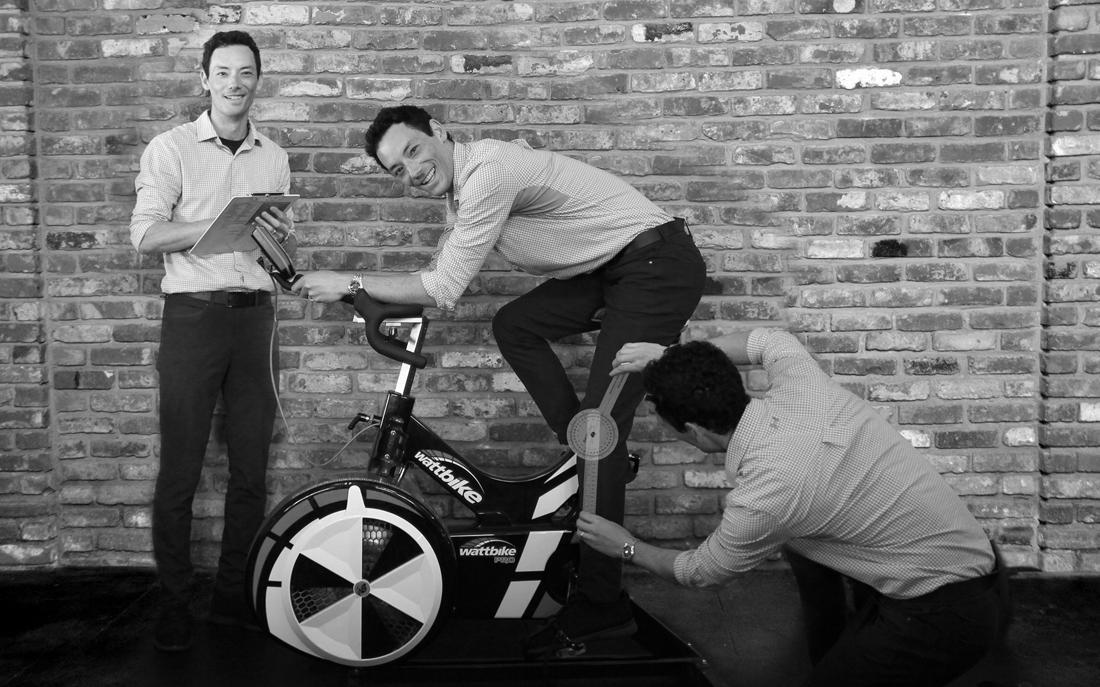
Kendra Wagers
Massage Therapist
Contact
Kendra Wagers has been a Massage Therapist since 2001. A native to California, she began her massage career in the Central valley working with various injury and chronic pain methods under experienced Chiropractors and physical therapists. In 2003 she relocated to Las Vegas, NV to attend the Nevada School of Massage Therapy’s accredited massage program which led to obtaining her National certification from NCBTMB. For over 13 years she worked as a licensed massage therapist in Nevada, including employment at top rated Spas on the Las Vegas strip. Receiving training in various modalities over the years including; Hawaiian Lomilomi, Thai, Sports and Shiatsu. In January of 2017 Kendra decided to return to California and is currently enrolled in the Traditional Chinese Medicine program at Five Branches University, furthering her education on overall health and wellness. With more than 17 years of experience and over 1500 hours in training Kendra has been able to hone in on her passion for healing while combining multiple techniques to provide a personalized and detailed massage to every guest. Her serene approach combined with her roots in structural techniques, offers harmony, balance, and ease to injuries or everyday stresses.
CA State Massage License #73011
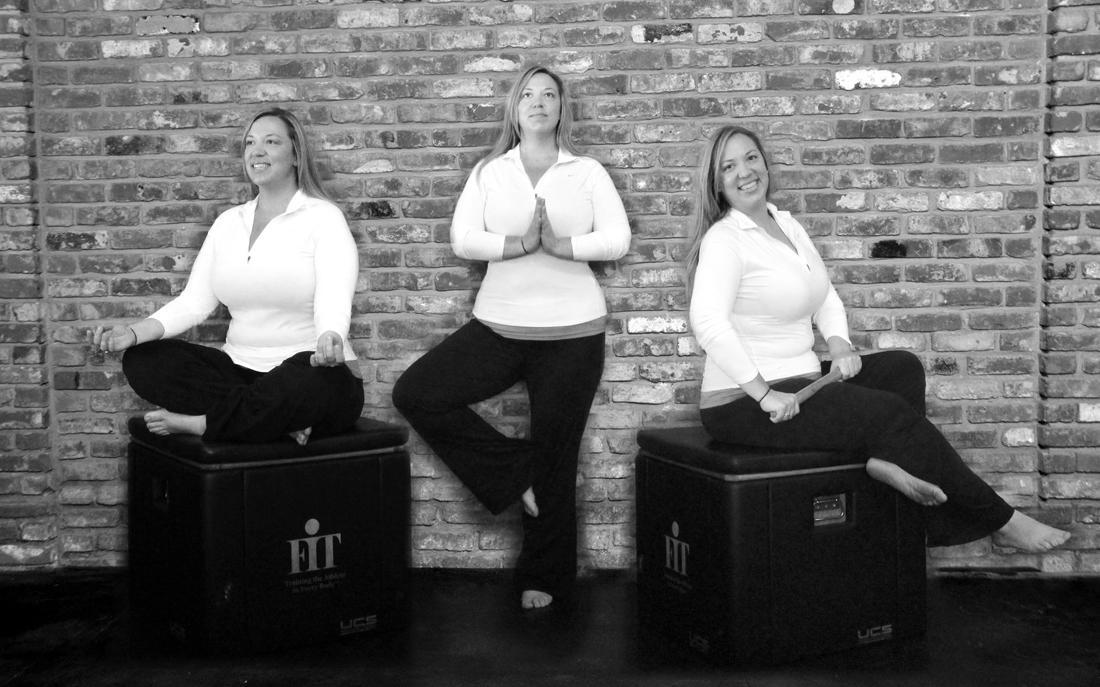
Katie Deangelis
- American Council on Exercise
- Crossfit Level One
- NSCA Certified Strength and Conditioning Specialist, In Progress
- Precision Nutrition Level 1 Certified, In Progress
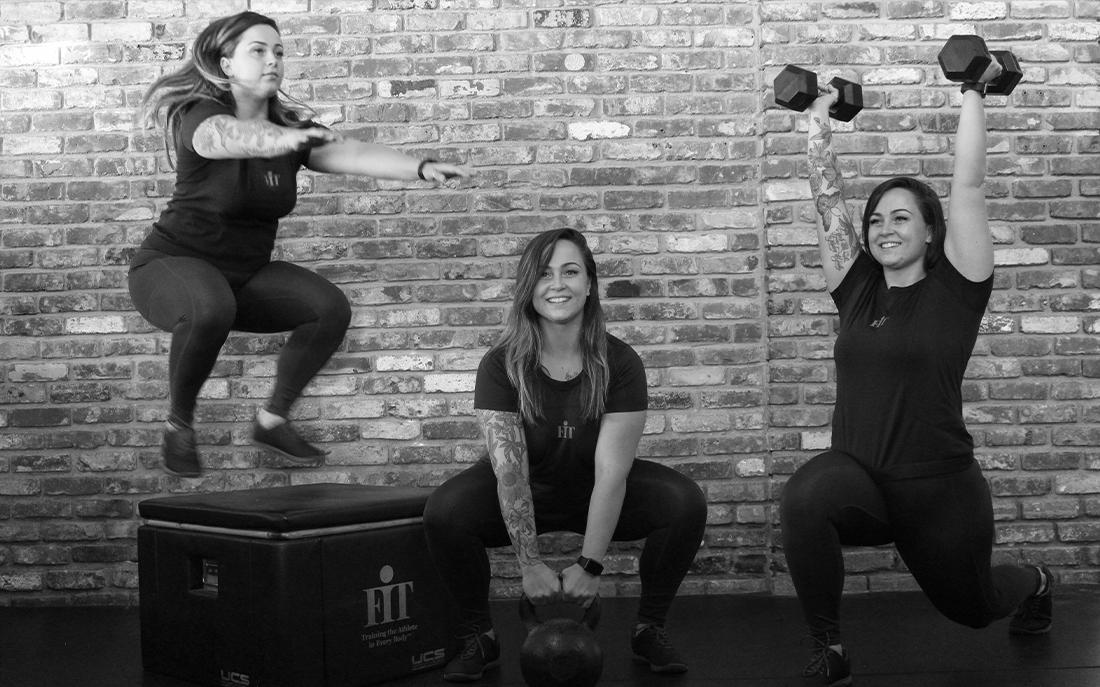
Kevin Martin
Strength and Wellness Coach
Personal Trainer
Certified Strength and Conditioning Specialist
OPEX CCP
Spirit Animal: The Lorax
Contact
Kevin graduated from Trinity University in San Antonio, TX with a B.S. in Business Administration with a focus in marketing. As a student, Kevin was a five-time conference champion in the 1-meter and 3-meter springboard diving events. He is a Certified Strength and Conditioning Specialist with the National Strength and Conditioning Association.
He has a particular passion for rehabilitation and improving overall functional status. He enjoys identifying and correcting areas of the body that are not operating at their full potential so that everyone can live life to the fullest!
Kevin has completed a full ironman, multiple 70.3 triathlons, 2 full marathons, as well as several shorter distance triathlons and road races. In addition to triathlon, he has a background in gymnastics, swimming, diving, and volleyball. He enjoys helping everyone find the athlete within themselves and find a love for movement and exercise.
When Kevin isn’t training at FiT or exercising, he enjoys cooking, surfing, hiking, and spending time with his wife and dog. He especially loves being a father his young daughter Mayley.
What I love about FiT: Community, Hard work, Supportive, Fun
Favorite sport: Volleyball, Surfing, Diving, Running, Cycling, Swimming (triathlon), Weight lifting. I love watching all sports.
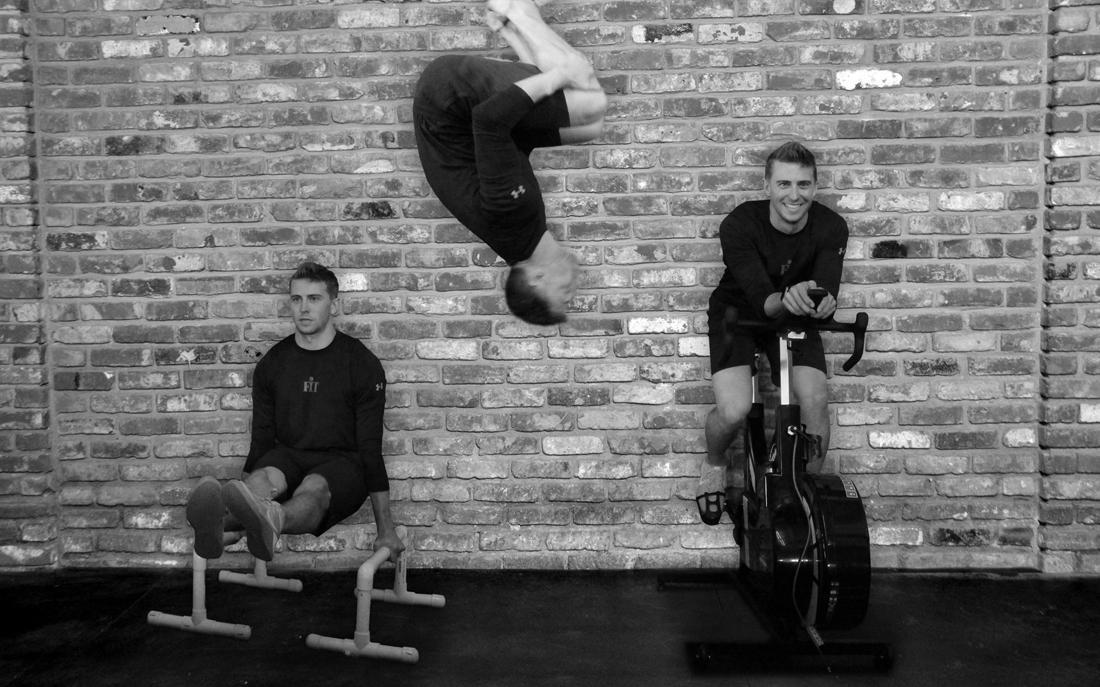
Tyler Pinkney
- 4 years of collegiate coaching experience
- Former Division I Athlete
- Assisted multiple athletes to the professional level
- Certified Strength and Conditioning Specialist, National Strength and
- Conditioning Association
- Basic Olympic Lifting Certification, Totten Training Systems
- Bachelors of Science in Psychology
- Masters of Education in Coaching, Sport, Recreation, and Fitness
- Administration
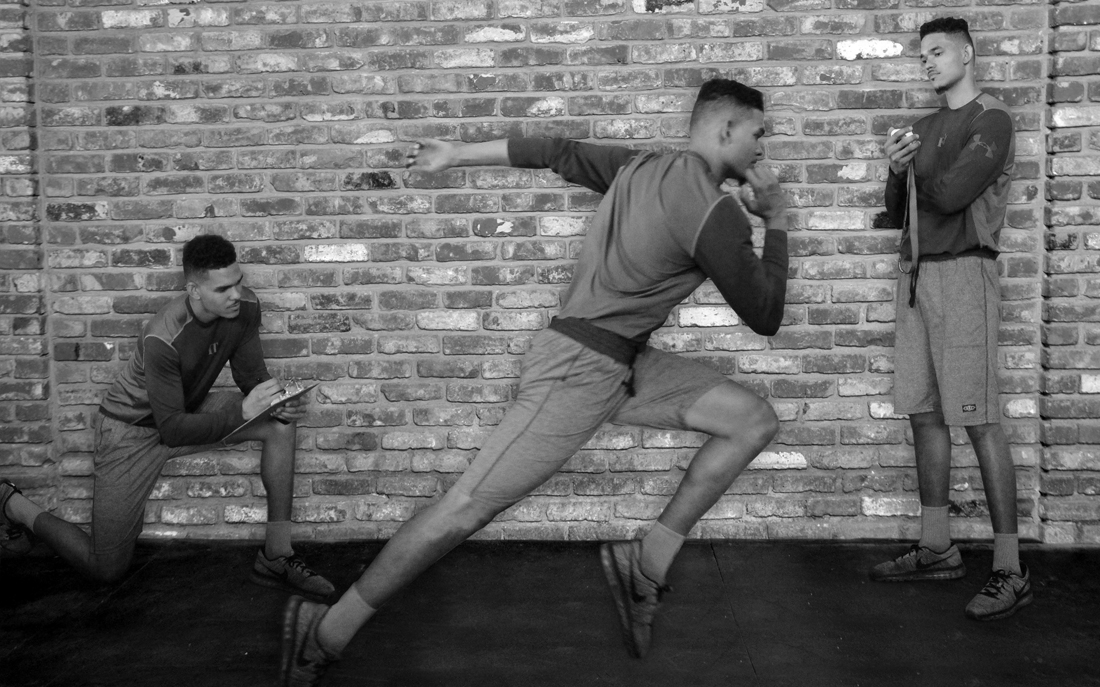
Juliana Oliveira
Trainer
Spirit Animal: Dolphin
Contact
What I love about FiT: I love the schedule flexibility.
Favorite sports: Snorkeling and swimming
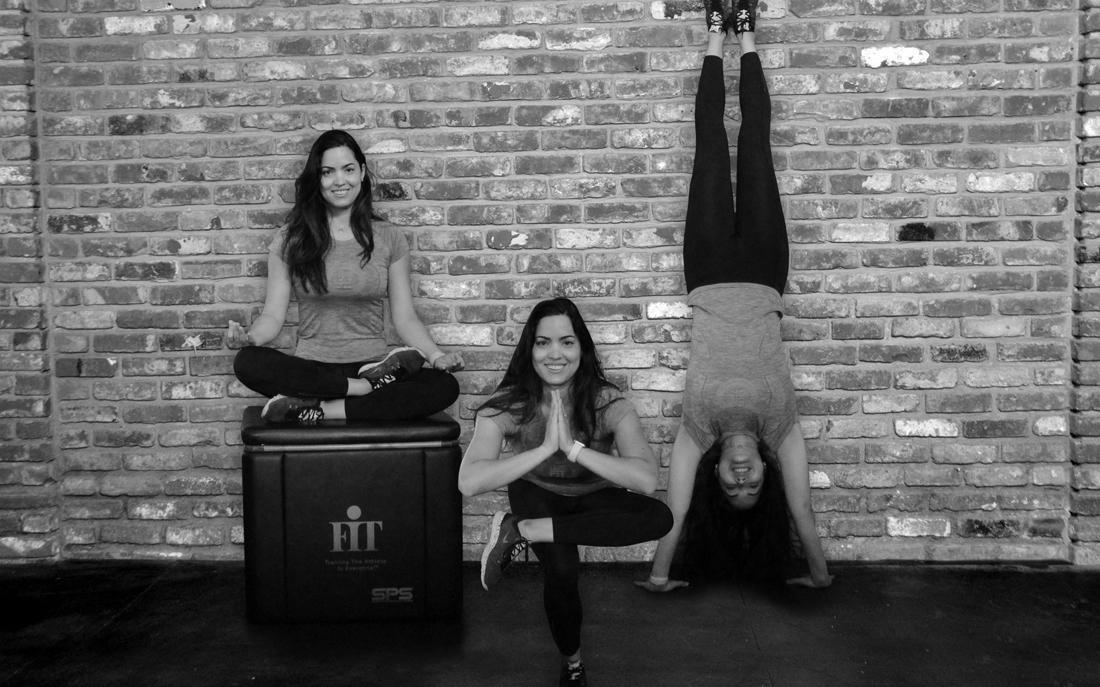
Angelo de la Cruz
Orthopedic Massage Therapist & Personal Trainer
Spirit Animal: Wolf-bear-dragon-unicorn beast
Contact
While studying biological sciences at Cal Poly SLO, it became clear that my health was suffering. I was always tired, I couldn’t sleep well, I had digestive issues, and my emotions would swing dramatically at times. The realization came that in order for me to enjoy life to its fullest, I had to get serious about improving the quality of my health.
Since then, I’ve studied with doctors, physical therapists, clinical nutritionists, physical trainers, bodyworkers, and top innovators in the field of health & wellness. Instead of chasing the symptoms of illness, the most effective approaches to well-being are those that work to eliminate things that degrade health AND instill lifestyle habits that allow the natural environment of our bodies and mind to operate as efficiently as possible. In this way, we can be lead lives with less pain & sickness.
My work aims to use the technology of the body to help you live a more vibrant & productive life.
Some of the things I have fun doing are Olympic Weightlifting, breakdancing, parkour & free-running, snowboarding, creating electronic music, digital art photography/ videography, competing in American Ninja Warrior (My competition run is here) & learning about quantum physics.
What I love about FiT: Uplifting, motivating, supportive
Favorite sport: Martial Arts, ninja warrior obstacle courses, break dancing
- Former Life Science Support Scientist at NASA Ames Research Center
- Certified High Performance Coach
- 2nd Degree Black Belt in Taekwondo
- CrossFit – Level 1 Certification
- USA Weightlifting Club Coach Certification
- Intrinsic Coach Certification – Life & Health Coaching
- BS Anatomy & Physiology
- American Massage Therapy Association – Professional Member
- Nationally Certified in Therapeutic Massage & Bodywork
- Certified Hendrickson Method Instructor
- Primal Reflex Release Instructor
- Certified Massage Therapist
- Certified Functional Diagnostic Nutrition Practitioner
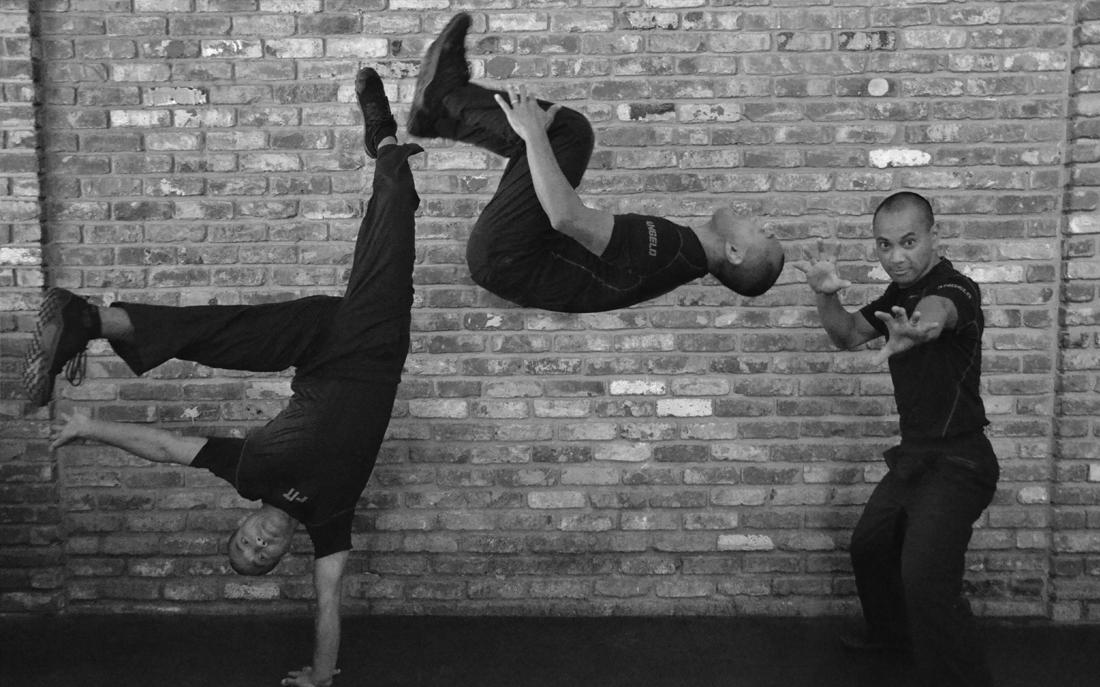
Shaun Conness
- USAW Club Coach
- NASM Certified Trainer
- TPI Golf Fitness Instructor
- CHEK Practitioner Level 1
- CHEK Certified Golf Biomechanics Specialist
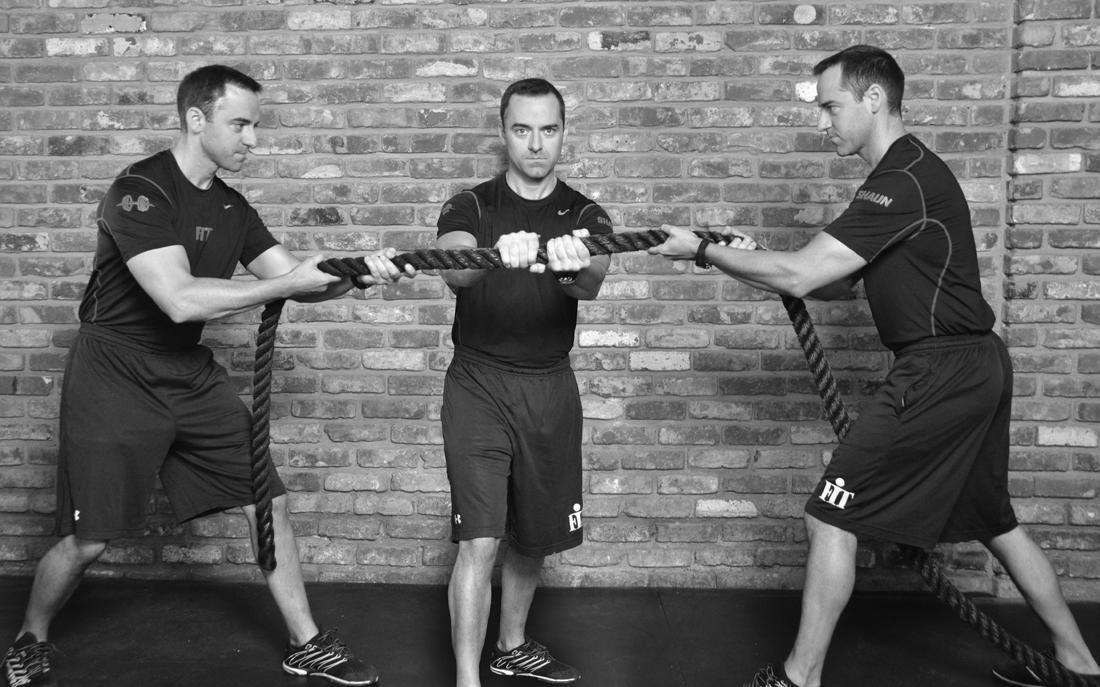
Jennifer Mulry
Personal Trainer
Spirit Animal: Bear
Contact
What I love about FiT: I love the family atmosphere at FiT and the collective effort to all be the healthiest version of ourselves.
Favorite Sport(s): Basketball & Swimming
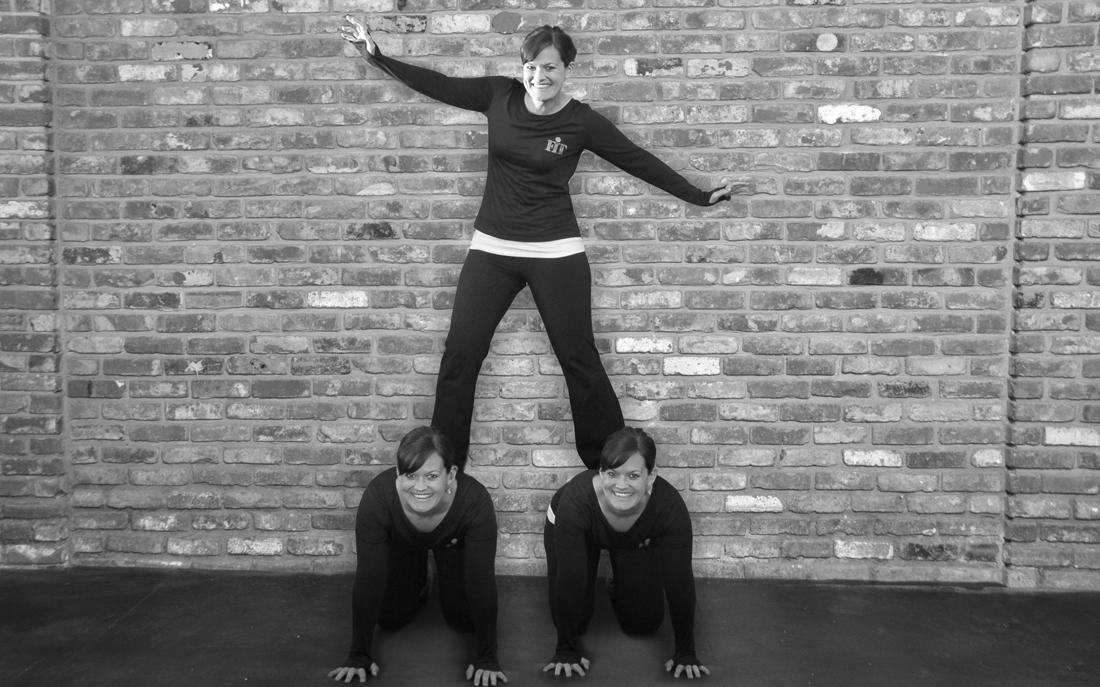
Jeff Samson
Trainer
Martial Arts Trainer
Assisted Stretch Practitioner
Spirit Animal: Blue Whale
Contact
What I love about FiT: Great space, staff, clients, ability to pursue my passions
Favorite sport: Jiujitsu


